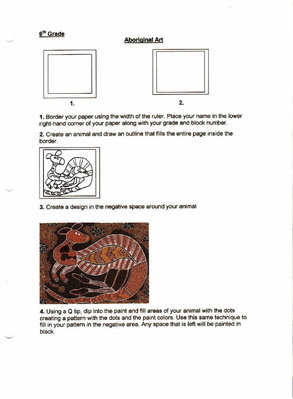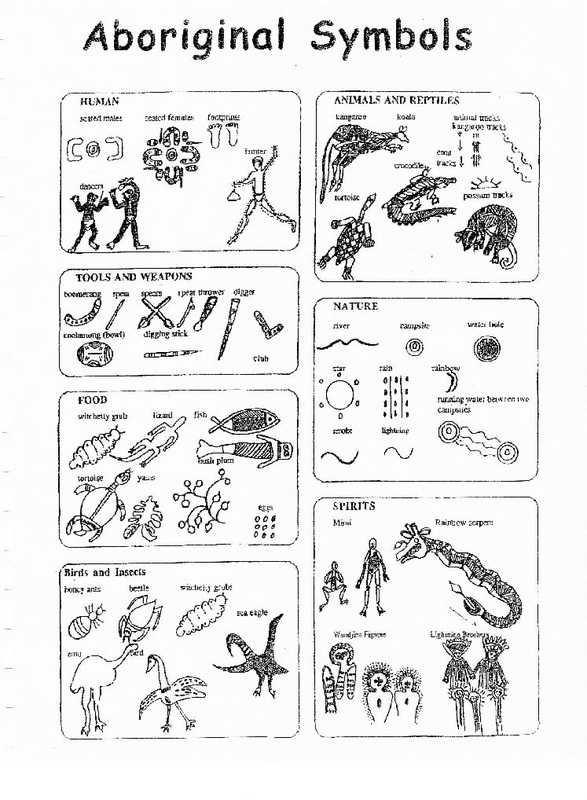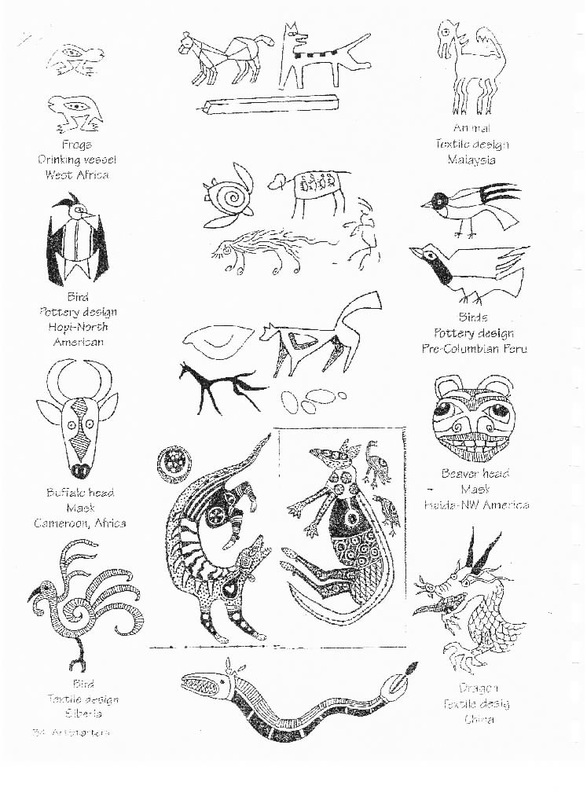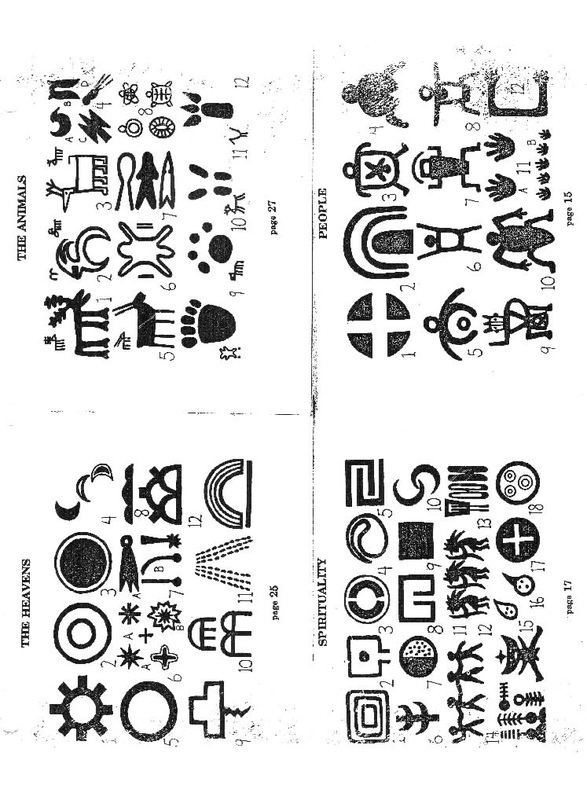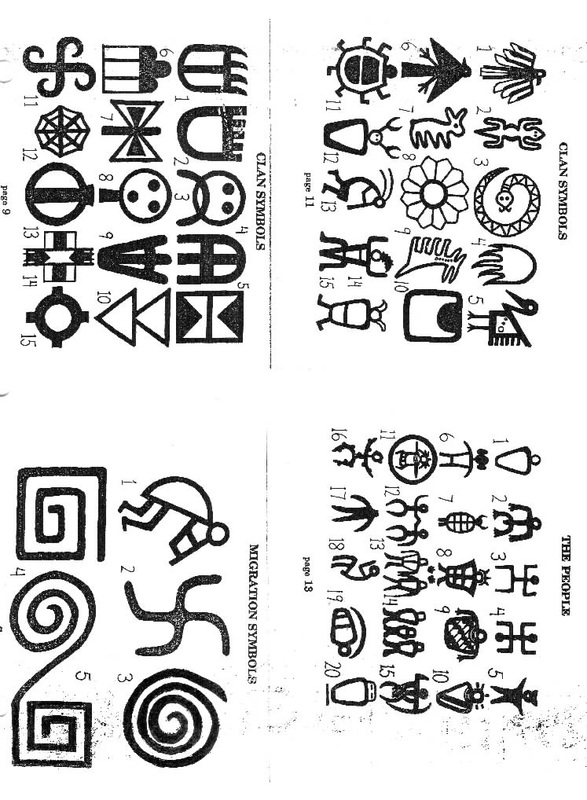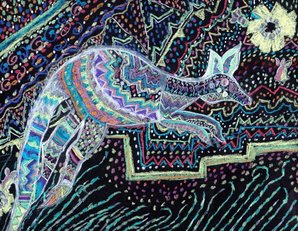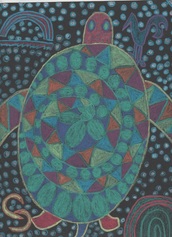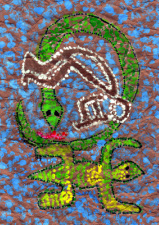Content Objectives:
|
Language Objectives:
|
Vocabulary:
|
Aboriginal Bark Painting
Australia has a tradition of Aboriginal art which is thousands of years old, the best known forms being rock art and bark painting. Traditionally, Aborigines have painted stories from their dream time. Modern Aboriginal artists continue the tradition using modern materials in their artworks. Aboriginal art is the most internationally recognizable form of Australian art. Several styles of Aboriginal art have developed in modern times including the acrylic Papunya Tula "dot art" movement. Painting is a large source of income for some Central Australian communities.
The designs seen on authentic bark paintings are traditional designs that are owned by the artist, or his "skin", or his clan, and cannot be painted by other artists. While the designs themselves are ancient, the medium of painting them on a piece of flattened bark is a relatively modern phenomenon, although there is some evidence that artists would paint designs on the bark walls and roofs of their shelters.
The so-called 'dot painting" refers in large part to the origins of the Papunya painting movement of the 1970s. The dots were used to cover secret-sacred information contained within the paintings. Originally, the paintings were used in addition to the oral history of Aboriginal dreamings and so they were made for cultural purposes and not the art market. The dots are, in effect, a form of camouflage
Australia has a tradition of Aboriginal art which is thousands of years old, the best known forms being rock art and bark painting. Traditionally, Aborigines have painted stories from their dream time. Modern Aboriginal artists continue the tradition using modern materials in their artworks. Aboriginal art is the most internationally recognizable form of Australian art. Several styles of Aboriginal art have developed in modern times including the acrylic Papunya Tula "dot art" movement. Painting is a large source of income for some Central Australian communities.
The designs seen on authentic bark paintings are traditional designs that are owned by the artist, or his "skin", or his clan, and cannot be painted by other artists. While the designs themselves are ancient, the medium of painting them on a piece of flattened bark is a relatively modern phenomenon, although there is some evidence that artists would paint designs on the bark walls and roofs of their shelters.
The so-called 'dot painting" refers in large part to the origins of the Papunya painting movement of the 1970s. The dots were used to cover secret-sacred information contained within the paintings. Originally, the paintings were used in addition to the oral history of Aboriginal dreamings and so they were made for cultural purposes and not the art market. The dots are, in effect, a form of camouflage
